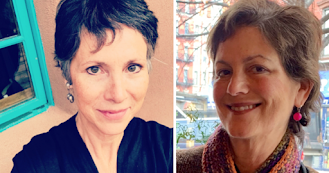In the last decade we have experienced the convergence of a worldwide financial crisis, two wars, and a developing interest in the sustainability movement. Due to our growing awareness of climate change and limited resources, American culture is responding with an almost romantic return to the basics. Growing your own food, repurposing your old stuff, and making your own accessories and gadgets have become a part of popular culture. Craft is back, although reinvented and redefined. Contemporary artists have joined the ranks of techies and tinkerers by making and crafting unique objects or social settings. Their work is both functional and/or makes sociopolitical statements that address our naïve and insatiable consumption of goods and media and its effects on the world around us.
The artists in MAKE:CRAFT display ingenuity, hand-making and technological skills, and participate in what could be termed an Art & Design-to-Craft Revolution. This activity has its roots in the Arts & Crafts Movement of the late 1800s, which responded to the industrialization of goods produced in Europe. At the turn of the 20th Century magazines such as Popular Mechanics and Craftsman began what is now a legacy of self-taught, skill-based knowledge sharing, and inspired current trends in the Do-It-Yourself (D.I.Y.) Movement, a historically American characteristic.
In the 1950s, the craft movement sought to be included in the contemporary art dialogue as it was typically valued as functional or utilitarian. Today many contemporary artists are turning to traditional crafts for exactly that reason, to create socially relevant works that engage communities in practical and empowering ways. It is an opportune aesthetic for the more performative arts including dialogic and relational public practice work that often overlaps with the “green” or sustainability movement.
In 2005, in response to this maker renaissance, MAKE, a quarterly project-based magazine was launched. Its sister publication, CRAFT was introduced the following year, and together they produce the annual MakerFaire in San Mateo, California. This fair, along with other efforts including the Renegade Craft Fair, Anarchist Book Fair, Eyebeam Roadshow, Sewing Rebellion Chapters, and Scrapyard Challenge Workshops are now international in scope. Several artists in this exhibition have been featured in Make and Craft and have initiated these events that operate outside typical art venues.
The artists included in MAKE:CRAFT create work about slowing down, skill-based empowerment, personalization of mass culture, open source sharing of knowledge, and challenging capitalist models of consumption. They want to contribute their skills in ways that break through economic and social confines, and give meaning to what they do. Ultimately, the work presents the many possibilities for making or crafting a new world.
Patricia Watts, guest curator
Artists include Kim Abeles, Jonah Brucker-Cohen, Frau Fiber, Garnet Hertz, Justseeds Artists' Cooperative, Seth Kinmont, Liza Lou, David Prince, Mark Newport, Alyce Santoro, Shada/Jahn (Steve Shada and Marisa Jahn), Eddo Stern and special performance by Crank Ensemble.
Showing at Ben Maltz Gallery at Otis College of Art and Design, Los Angeles until 12/4
MAKE:CRAFT Facebook page with images from the exhibition HERE
More information on the MAKE:CRAFT Blog HERE



































